Have you ever come across Egyptian gravestone symbols in the cemetery – perhaps even on your own ancestor’s gravestone – and wondered why they were there and what they meant?
Obelisks, pyramids, and other Egyptian symbols are fairly common throughout the United States, Europe, and many other parts of the world. But exotic Egyptian designs may seem out-of-place in cemeteries far from Egypt without further investigation.
In this blog post, you will learn more about your ancestors and the times they lived in by understanding the meaning behind Egyptian symbolism in the cemetery. You will also come to understand how those Egyptian symbols came to be in there in the first place.
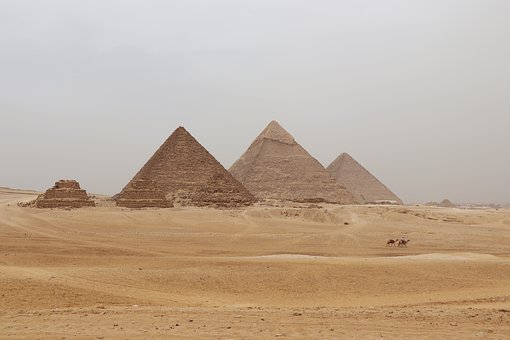
Napoleon and Egyptology
A little historical background will be useful as we explore how Egyptian symbols ended up on gravestones around the world.
Between 1798 and 1801 Napoleon Bonaparte conducted a three-year military campaign to conquer Egypt for France. His reasons for wanting to dominate the region were three-fold:
- protect French trade interests
- destroy British commerce in Egypt by blocking their trade routes
- bring Egyptian culture and intellectual advancement to France
With this third objective in mind, Napoleon ordered 167 scholars and scientists to accompany the French military forces into Egypt. The group included engineers, artists, geologists, mathematicians, chemists, physicists, naturalists, and botanists.
Napoleon’s forces were eventually driven out of Egypt, defeated militarily as well as by disease but France and the rest of the world were forever changed by their exposure to mid-East culture.
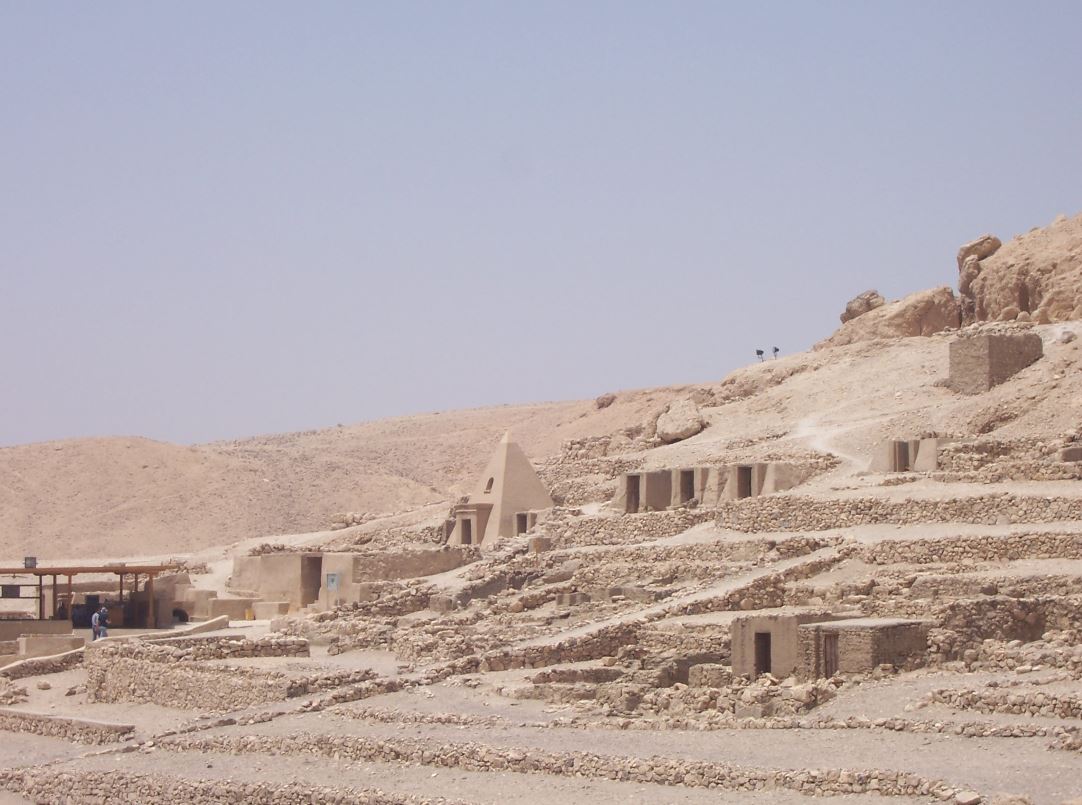
From Egypt to France
After returning to France, Napoleon faced trouble of a different sort. Many large cities were plagued with epidemics as a result of people attending worship services in churches, temples, and synagogues where dead bodies were buried within the walls and beneath the floors.
As more and more people died during the epidemics, corpses were also hastily buried outdoors in shallow graves without coffins. Bodies were stacked on top of one another in an effort to save space in churchyards that had been in use since the Middle Ages. Then survivors walked daily through these fields serving as overstuffed burial grounds, further exposing them to disease.

So in June of 1804, Napoleon directed an end to all burials throughout France in places of worship and their surrounding yards. This proclamation went a long way to improving the health of city dwellers. It also altered 1500 years of ecclesiastical tradition.
Napoleon’s ban created an urgent need for burial space beyond the city limits. So in December of 1804, a park-like cemetery was established just outside of Paris called Cimetiere du Pere Lachaise.
Egyptian Symbolism in a Paris Cemetery
As Parisians left behind the burial sites in churches, churchyards, temples, and synagogues, they also frequently abandoned the religious symbols that had accompanied them.
Instead, the French people looked to the scholars and scientists who had returned from Napoleon’s campaign for design ideas to adorn their loved one’s tombs. These men influenced members of Parisian society to consider anything Egyptian to be in vogue – from art and architecture to Egyptian symbols on gravestones and mausoleums.
Last spring I visited the Pere Lachaise Cemetery -the world’s most visited cemetery – where I saw many Egyptian-style mausoleums, statues, and gravestones. Pyramids, cobras, and pharaohs seemed strangely paired with nearby gravesites adorned with traditional crosses, praying hands, or flowers.
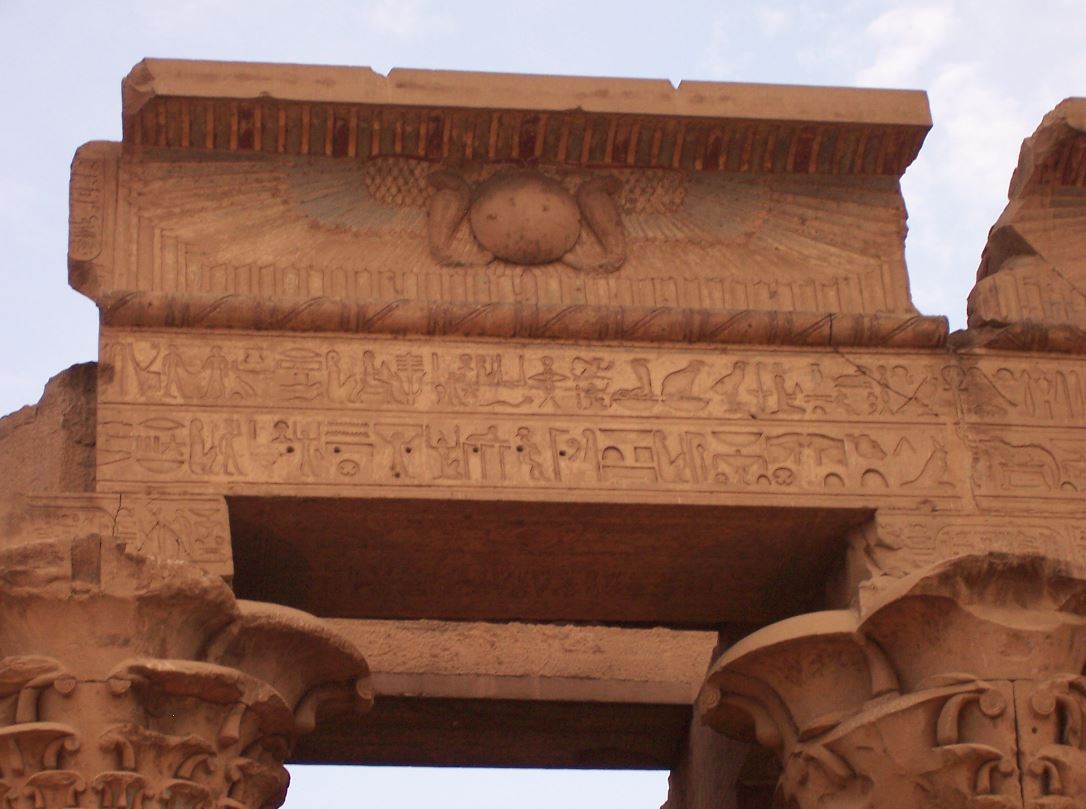
Compare the symbols in this photo I took in Egypt to the image below taken in France.
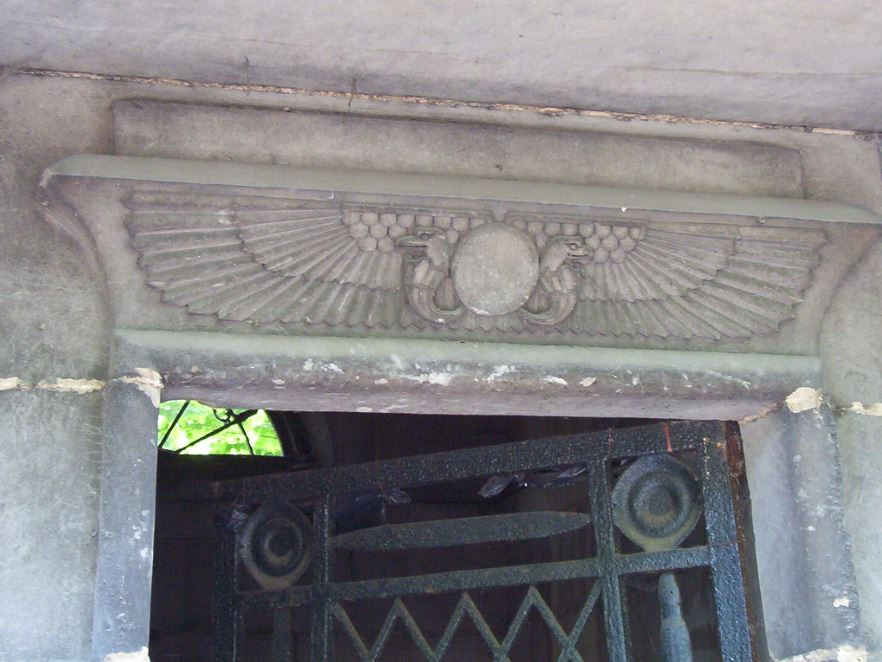
This photo, taken in the Pere Lachaise Cemetery in France, of a winged sun disc with cobras is nearly identical to the symbols in the photo above taken in Egypt. photo credit
Egyptian Influence Spreads
As world leaders traveled to Paris, they took the Egyptian trend home with them, impacting architectural and artistic styles in cultures across the world. Millions of cities erected obelisks in their central squares and added Egyptian symbols to their municipal buildings.
And Egyptian popularity did not stop at the cemetery gates!
Copycats
Pere Lachaise Cemetery is a unique place because, unlike the crowded burial grounds of its time, it was designed to have trees, benches, and walking paths. Its park-like atmosphere was a purposeful effort to encourage city-dwellers to bury their loved ones outside of city limits.
Pere Lachaise rapidly became an inspiration for park-like cemeteries around the globe. And as the new style spread, the Egyptian cemetery influence went right along with it. Symbols such as the ankh, sun discs, sphinx, and cobras became requested gravestone emblems throughout the world.
For decades, Egyptian influence on tombs remained popular. Then there was a brief lull in popularity. But in 1922, King Tutankhamun’s tomb was discovered in Egypt. This set off a renewed interest in all-things Egypt and the time period came to be known as the “Egyptian Revival.” Once again, stone-cutters were asked to pull out their tools to chisel Egyptian symbols on gravestones.
Egyptian Symbols
Your own trips to the cemetery may have made you curious about Egyptian symbols at the cemetery – or even on your own ancestor’s gravestone. You may have wondered what they meant. Below is a list of Egyptian gravestone symbols and their meanings.
Ankh
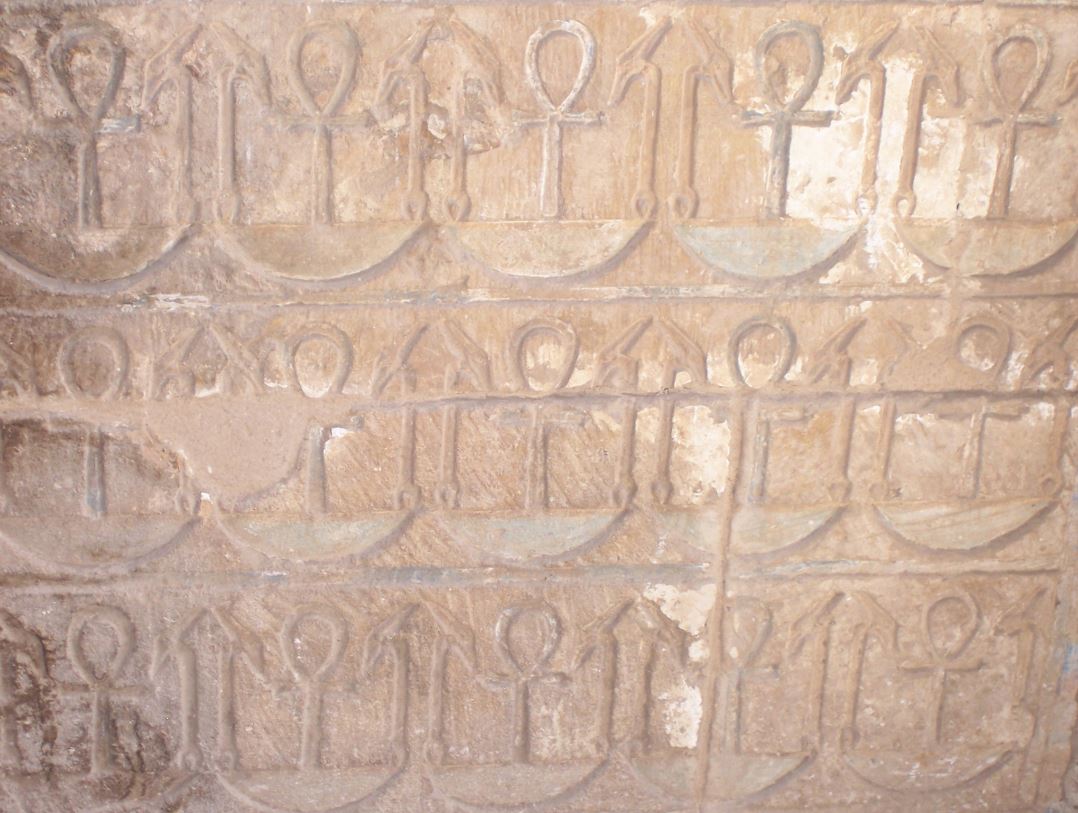
The ankh symbolized eternal life and was sometimes called the key of life or the key of the Nile. Moreover, its key-like shape implied that it could unlock the gates of death, allowing the deceased to enter a post-mortal world.
The ankh is often shown in ancient Egyptian art in the hands of a Pharoah, king, or queen. Frequently the ankh was also held by a major Egyptian god, such as Ra, Osiris, or Isis.
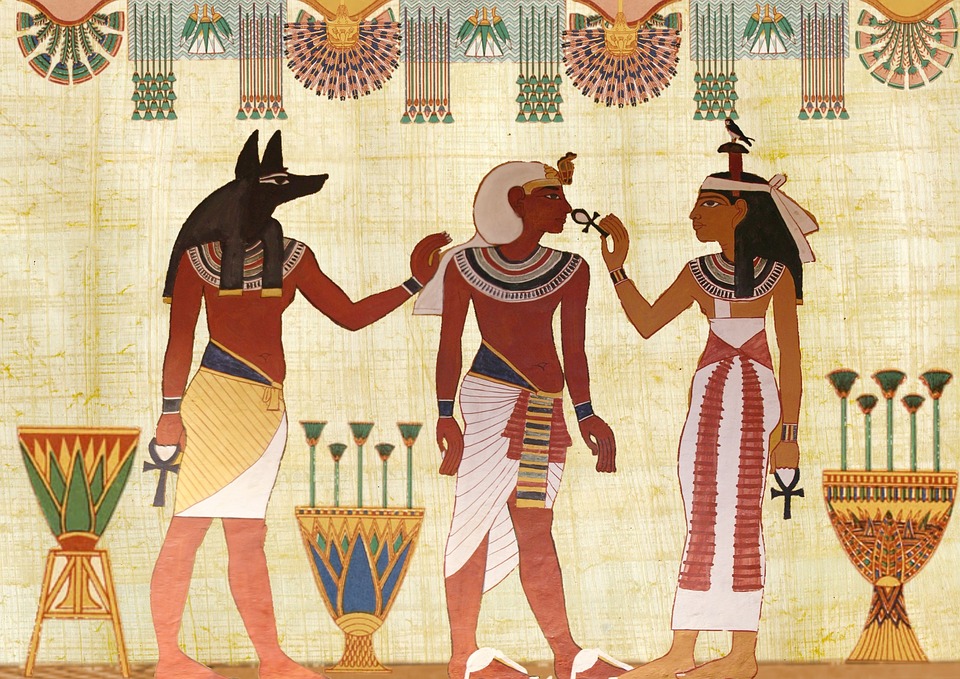
Ra was the ancient Egyptian diety of the sun, who traveled through the underworld at night and was resurrected every morning at dawn. Osiris, ruled over the flooding of the Nile, life, death, and the afterlife. His wife, Isis, had magical powers to protect Egypt from its enemies. She also ruled the skies and earth. Most importantly, she had the power to help the dead enter the next world.
Each of these Egyptian gods had powers relating to the afterlife, so it was logical that they should be depicted holding an ankh in ancient tomb paintings and carvings.
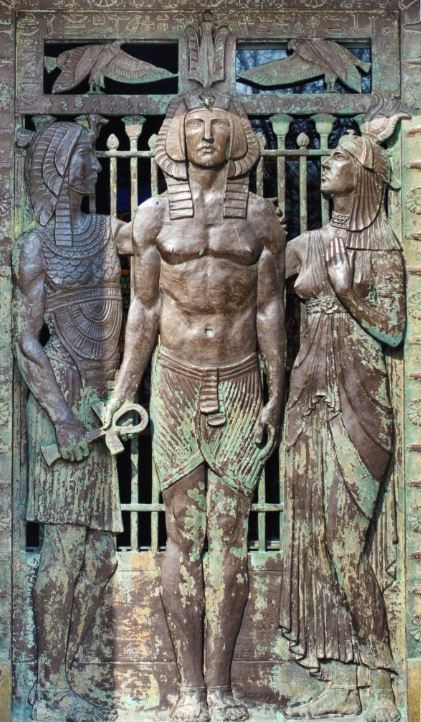
Notice the ankh or key of life being passed to the departed.

so much that he commissioned one for his family mausoleum
at the Allegheny Cemetery in Pittsburgh, Pennsylvania.
Winter was president of the Workingmen’s Savings Bank and Trust Company and one the founders of the Pittsburgh Steel Company.
Cobras
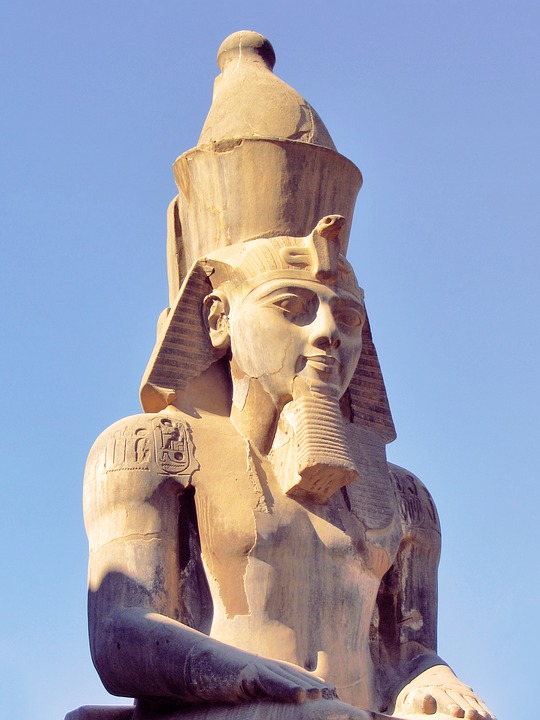
Another common symbol in ancient Egyptian art is the cobra. Pharoahs wore the cobra symbol on the front of their crowns as protection against their enemies. Cobras were carved into drinking vessels, jewelry, and furniture. There have even been mummified cobras found in Egyptian tombs.
The Egyptian banded cobra can reach 8 feet in length and can lift its head 2 feet into the air. Its flared hood can spread 5 inches in width, a warning against its venomous strike. The victim of an untreated cobra strike will die within 10 minutes due to respiratory failure resulting from the snake’s powerful neurotoxins.
Impressed by the cobra’s strength, ancient Egyptians worshiped Wadjet, a cobra-goddess who protected lower Egypt. She was sometimes depicted as a woman with two snake heads and other times as a cobra with a woman’s head.
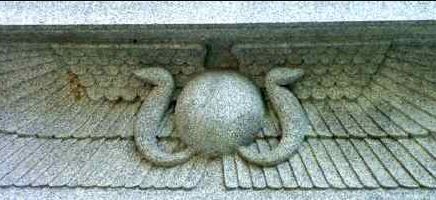
Photo credit
Thus, it was logical that cobras should appear on cemetery monuments and in carvings as a protection against one of the greatest mortal enemies – death.
Eye of Horus
The “all-seeing eye” is a common gravestone symbol and it may have its roots in ancient Egyptian mythology.
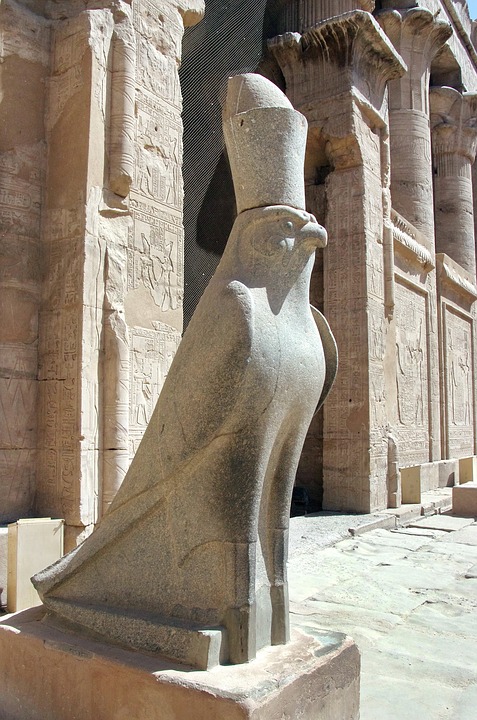
The Egyptian god of the sky was a falcon named Horus. He was son of Osiris and Isis, who protected the royalty of Egypt, avenged wrongs, and defended order. Depictions of Horus are seen in many royal tombs and dwelling places. But it is only Horus’ eye that made it to cemeteries as a gravestone symbol!
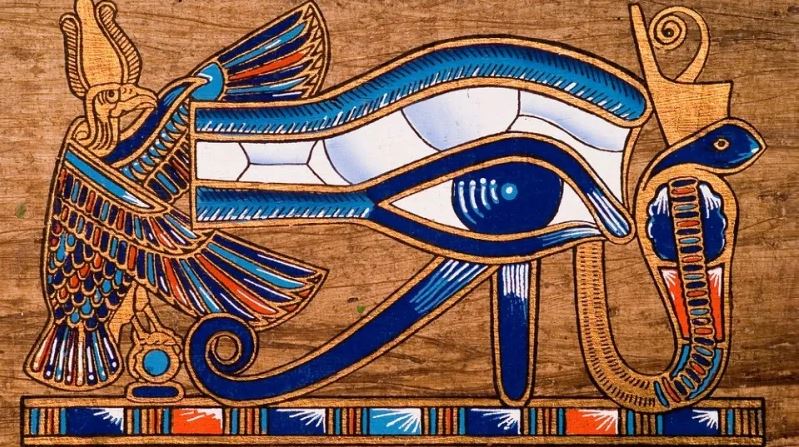
You see, Horus, ruling over the sky as a falcon, could witness everything from high up above – including human lives and actions. Thus the eye of Horus was often fashioned on amulets or necklaces as a reminder to the living that this Egyptian god could spot danger for its wearer and call out for their protection.
In addition, amulets with the eye of Horus have been found on mummies, placed there to help the souls of the dead achieve safe passage to the afterlife.
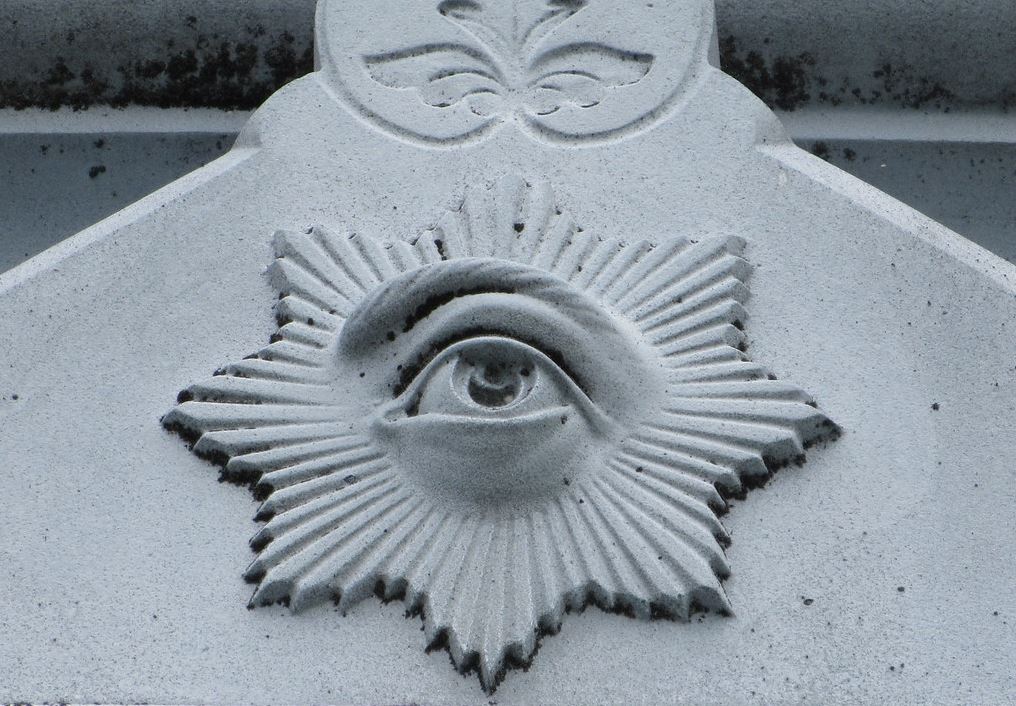
The eye of Horus may have been the inspiration for the “all-seeing eye,” a symbol used by the Masons and the International Order of the Odd Fellows on gravestones. It represents the idea that all deeds on earth are seen by the God of heaven.
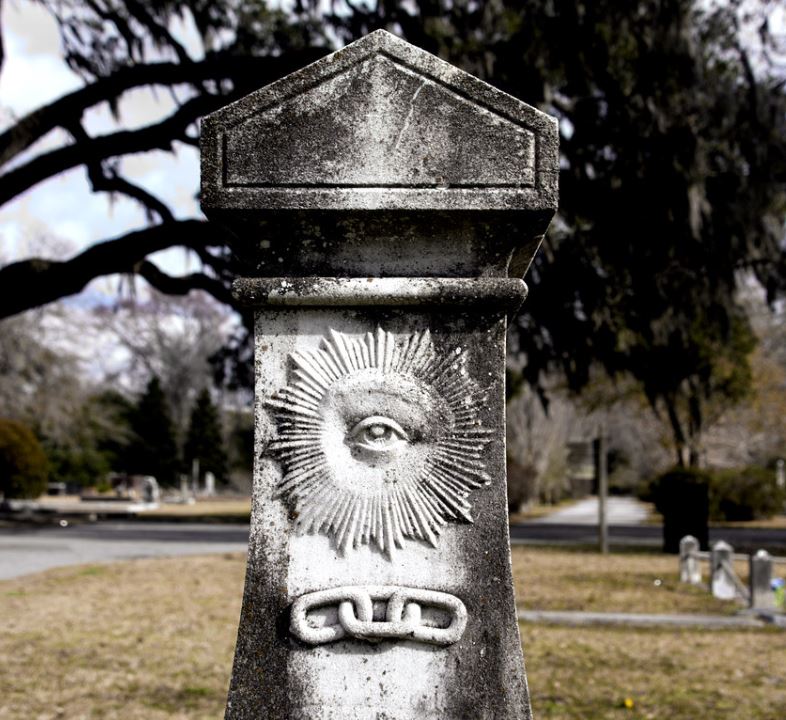

Here is another chain beneath this “all-seeing eye,” a symbol of the International Order of the Odd Fellows, with the letters F, L, and T standing for friendship, love, and truth.
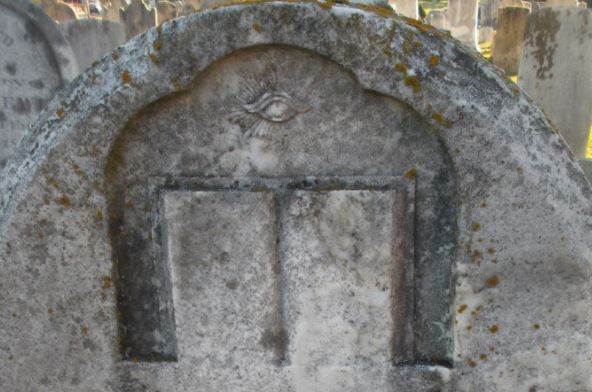
The gravestone symbols of the “all seeing eye” and the open Book of Life are reminders that God sees and records all that we do on earth.
Feathers
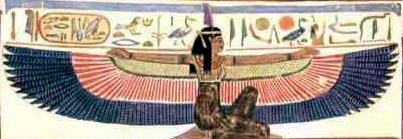
Ma’at was the goddess of truth, justice, and order. She was the daughter of the sun-god Ra. She is one of the earliest Egyptian mythological figures.
Egyptian myths taught that when someone died, their soul was taken before Osiris, the Lord of the Dead, to be judged. The 42 Judges of Ma’at would accompany them. The heart of the deceased was then weighed on the Scales of Justice against a feather from Ma’at’s headdress.
If the deceased had led a good life their heart would balance perfectly with the feather. Then they would be blessed to live with the celestial gods and goddesses for all eternity.
But if the departed soul had committed crimes, their heart would be heavier than the feather on the scales. Their punishment was to be eaten by the goddess Ammut and die an eternal death!
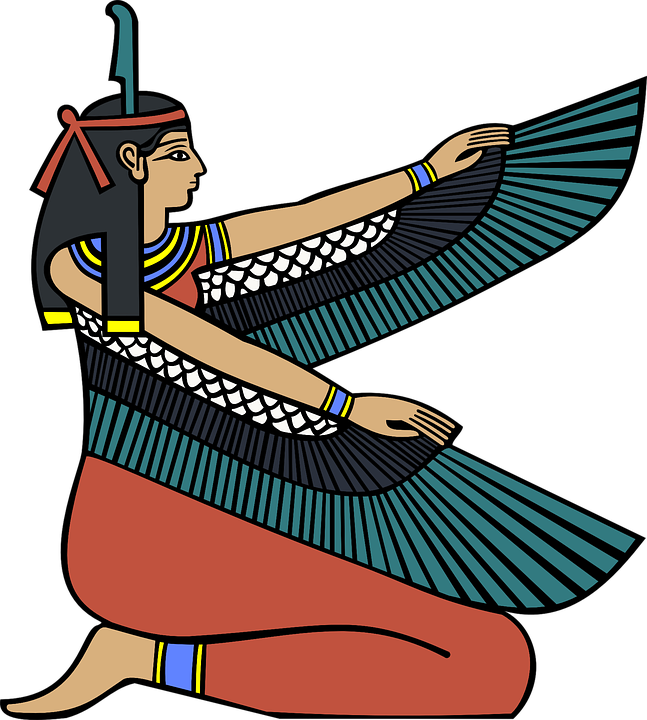
This is an Egyptian queen with feathers attached to her arms, symbolizing
power over the earth and flight into the afterlife.
In ancient Egypt, feathers or birds also signified the soul’s flight from earth into the afterlife. Feathers were often shown in 2 layers, representing earth and heaven or 3 layers, representing the king, earth, and heaven.
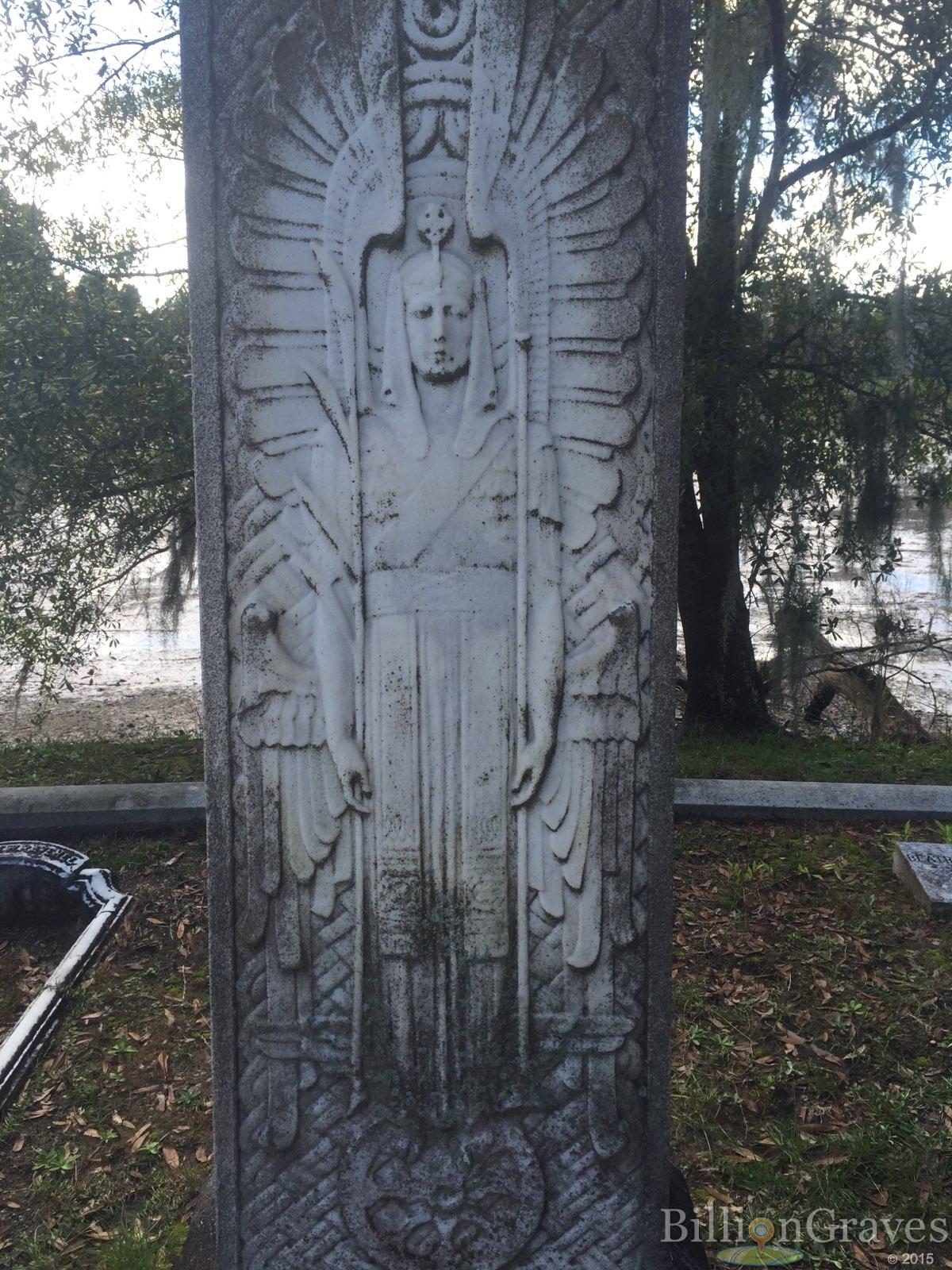
This is Lottie Sophia Reeves’ gravestone in Magnolia Cemetery at Charleston, South Carolina
features an Egyptian queen adorned with feathers.
Lotus

The lotus was an important emblem in Egyptian tombs and palaces. This flower closes its petals at night and reopens them in the morning, making it a perfect symbol for life after death.
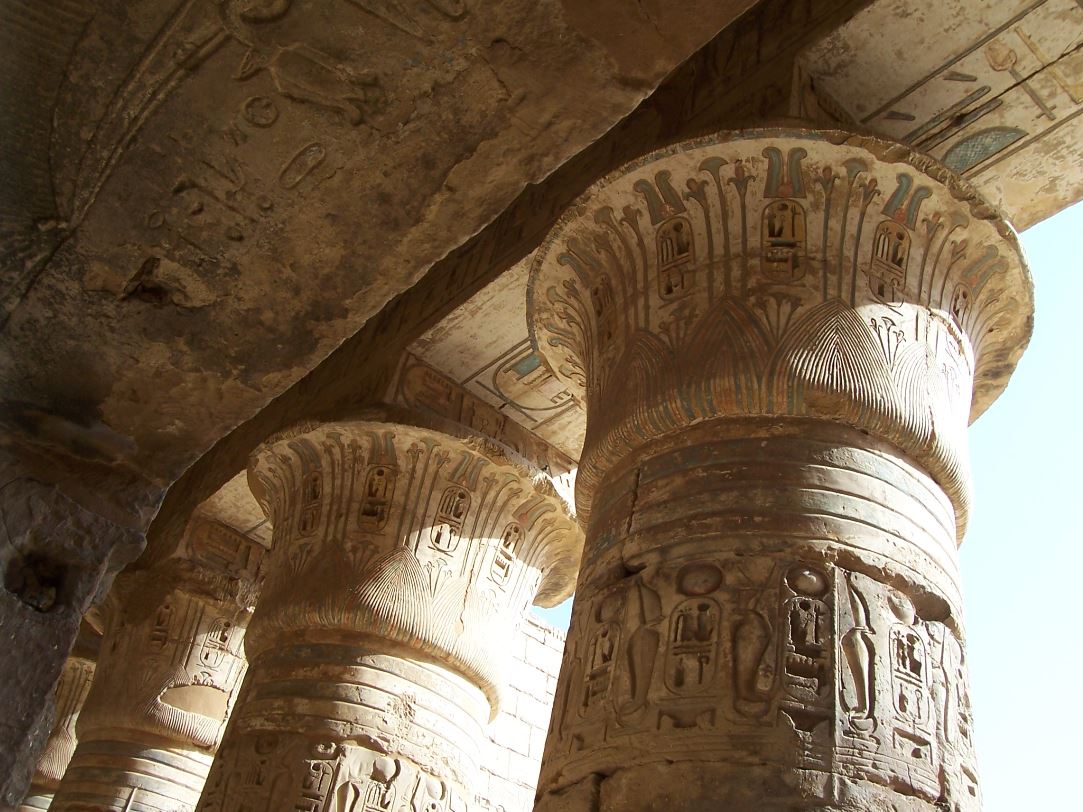
Lotus petals are commonly seen at the top of Egyptian columns.
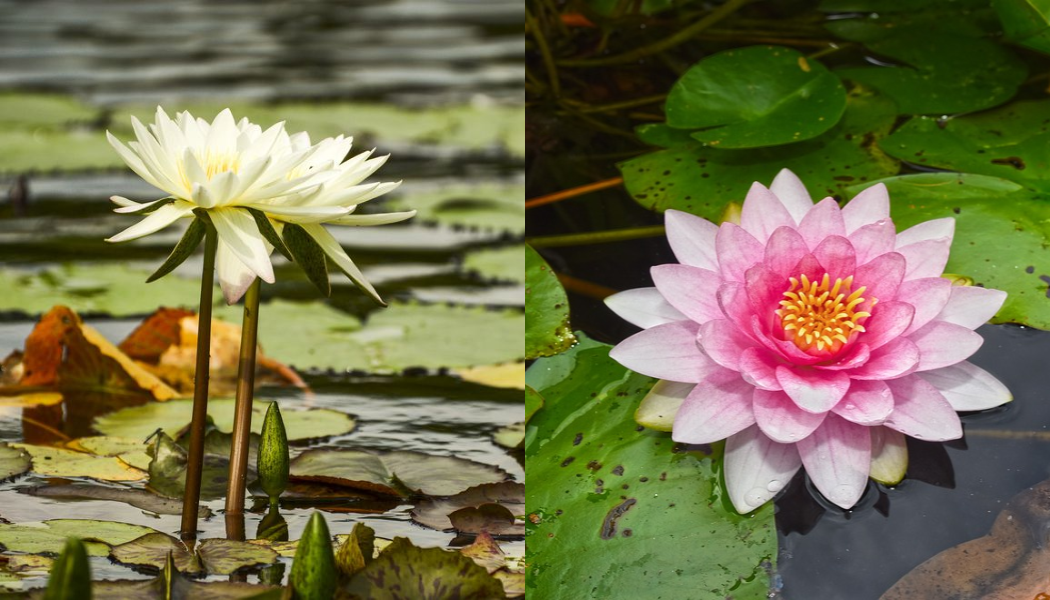
Lotus and water lilies are similar plants that are sometimes confused. Lotus bloom on stems above the water, while water lilies rest at the surface.

This lotus on a modern gravestone symbolizes eternal life.

Lotus rise above the water, just as the deceased was believed to rise above death.
Obelisk

Obelisks are upright four-sided pillars that gradually taper off at the top into a pyramid shape. Many obelisks were erected near funerary sites in Egypt. The sides of obelisks were often inscribed with hieroglyphics.
In ancient Egypt obelisks, which are shaped like rays of sunshine, were a symbol of the god of the sun Re, who had the power of creation. Thus, obelisks in modern cemeteries represent God or the great creator.

This obelisk is at the tomb of Abraham Lincoln in Oak Ridge Cemetery, Springfield, Illinois.

The obelisk is the most common Egyptian symbol in modern cemeteries. Read Williams family gravesite, Graceland Cemetery, Chicago, Illinois
Palm
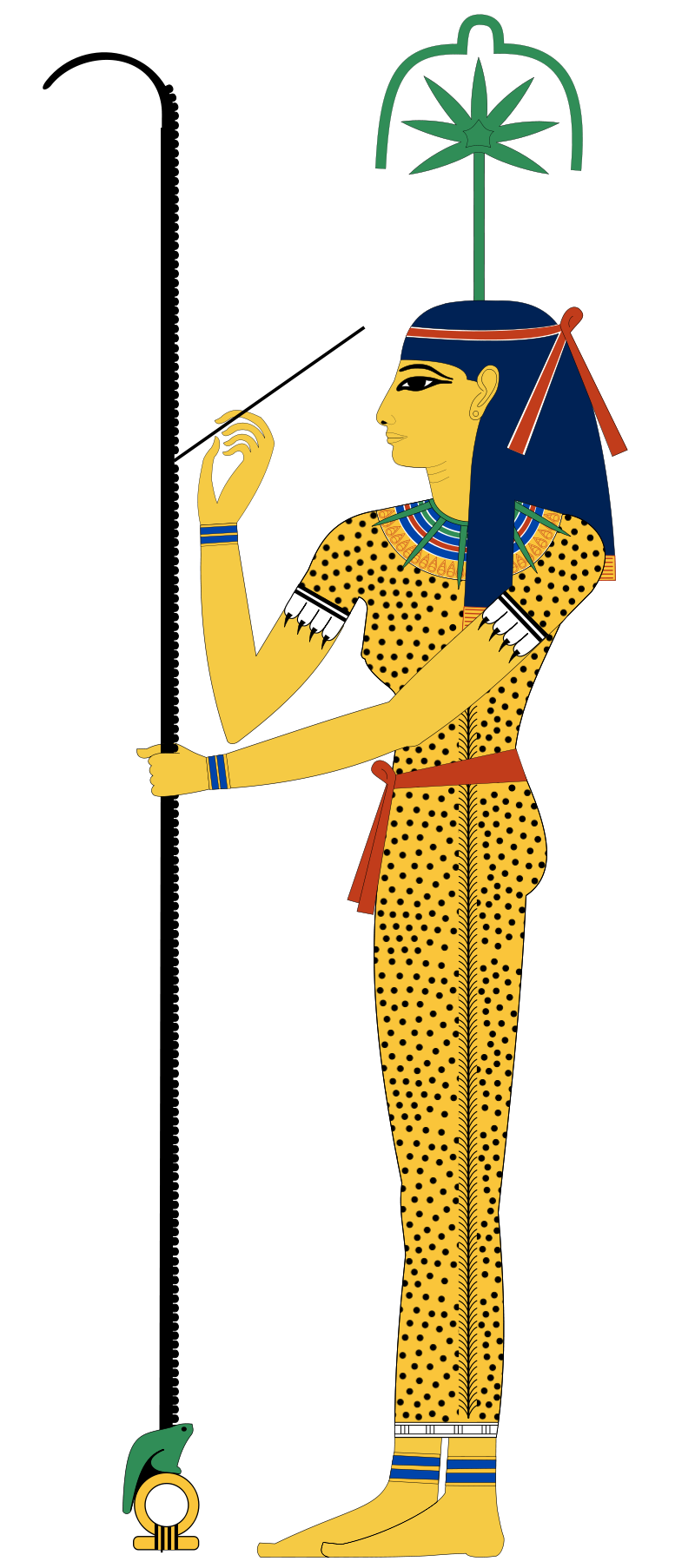
Seshat was the ancient Egyptian goddess of wisdom and knowledge who was credited with discovering writing. In the picture above, she is notching a palm stem to mark the passage of time or years allotted to a pharaoh’s life on earth.
Seshat is often depicted wearing leopard or cheetah hide, the typical attire for Egyptian funerary priests. Above her head is a palm frond.
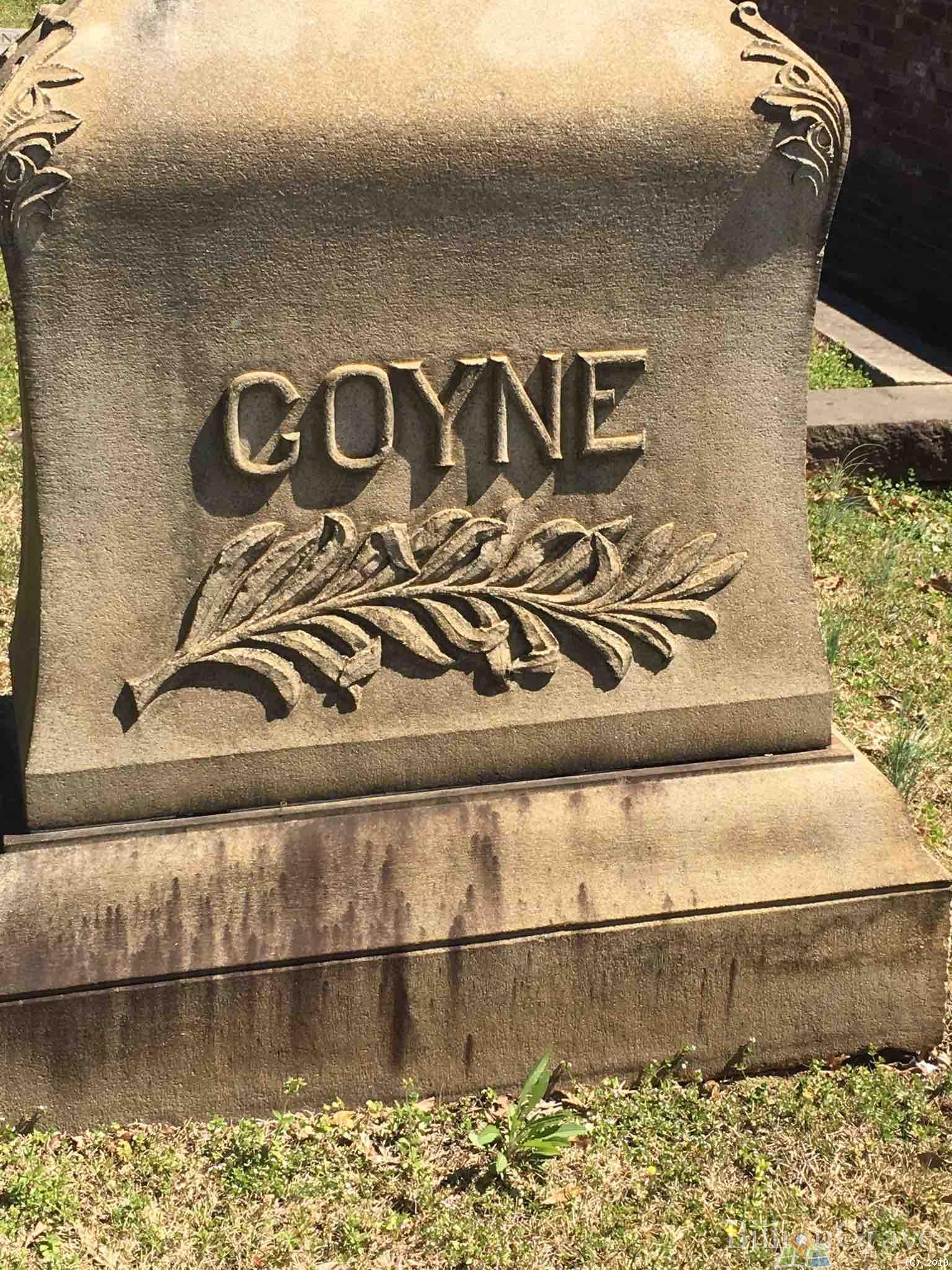
The Goyne family gravestone at Oakland Cemetery in Atlanta, Georgia features a palm leaf.
The palm leaf was an ancient Egyptian symbol of victory and triumph. Since victory signifies an end to conflict, it found its way into the cemetery as a symbol of victory over illness and triumph over death.

This gravestone symbol would indicate that Cornelius Sheehan triumphed over death in 1888. Oakland Cemetery in Atlanta, Georgia
Pyramid

Pyramids are the most recognizable ancient Egyptian symbol. They represent the rising up of man from the natural world toward the sun or the afterlife.
The Great Pyramid at Giza is aligned with 3 axis:
- the horizontal north-south axis parallels the flow of the Nile River to the sea and symbolizes the passage from ignorance to knowledge
- the horizontal east-west axis follows the daily rising and setting of the sun and symbolizes a return to the source
- the vertical axis flows from heaven to earth and represents the link between divinity and humans, celestial and terrestrial
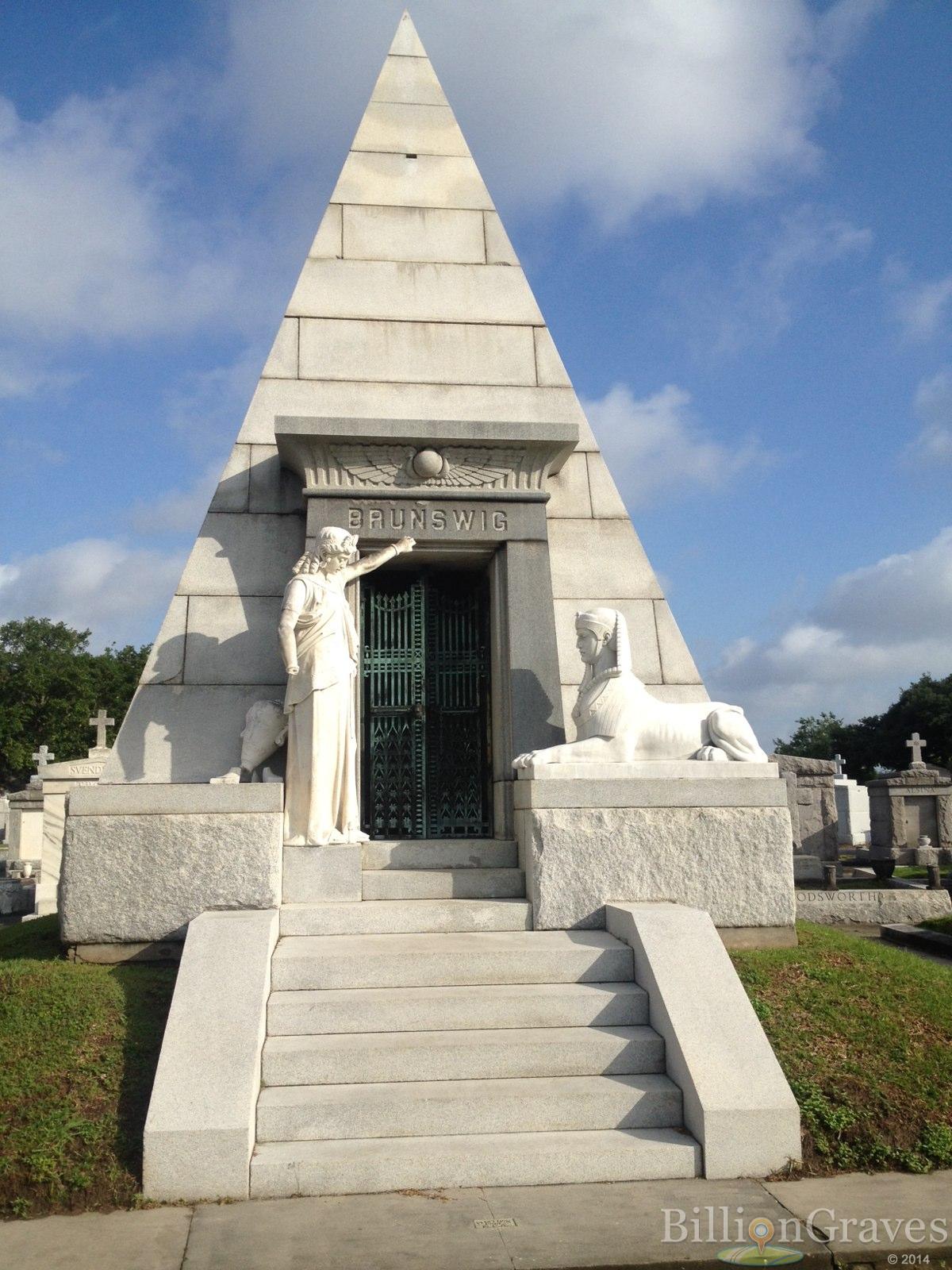
In the 19th century, Metairie Cemetery in New Orleans was the final resting place of the southern rich and famous, including 9 Louisiana governors, 3 Confederate generals, and 7 New Orleans mayors. Among them was Lucien Napoleon Brunswig, a pharmaceutical distributor and millionaire.
When Brunswig’s 9-year-old son died, followed by his wife’s passing about a month later, he had a pyramid-shaped tomb built at Metairie Cemetery. A sphinx guards the doorway and a winged sun disc hovers over the door. And a striking Egyptian woman glances downward in sadness while pointing to the family name.
Click HERE to see this pyramid mausoleum on the BillionGraves website.
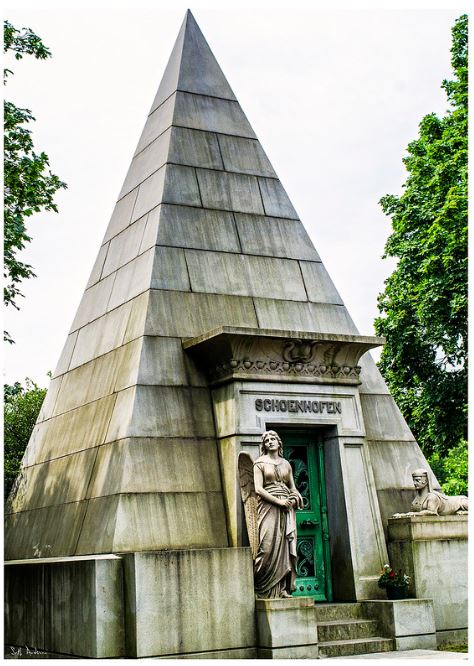
This is Schoenhofen Mausoleum in Graceland Cemetery, Chicago, Illinois.
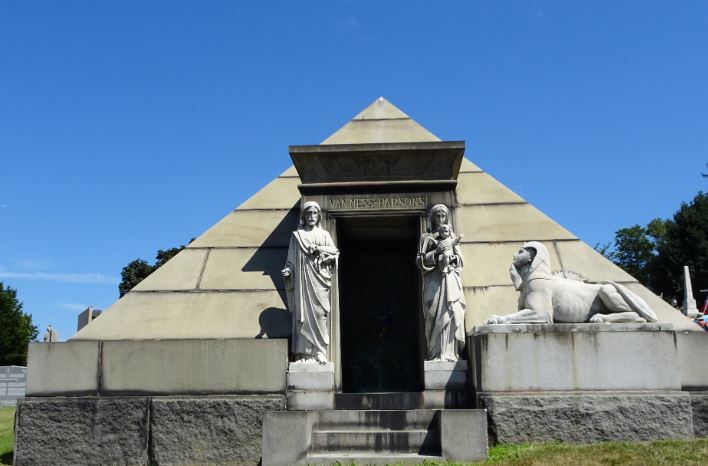
This is the Van Ness and Parsons pyramid tomb at Green-wood Cemetery, Brooklyn, New York.
Scarab Beetle

This scarab beetle amulet was found in the tomb of Tutankhamun. The scarab beetle was sacred to ancient Egyptians and was often portrayed in tombs with falcon wings as a symbol of eternal life.
To many of us, considering a scarab beetle sacred may seem very odd. But the Egyptians marveled at its strength and ingenuity. A scarab beetle can roll a ball of dung 250 times its own weight.
Scarabs lay their eggs in the dung ball. Then after the larvae have consumed the dung, they emerge as new creatures. So scarab beetles were seen by the ancient Egyptians as symbols of resurrection and the afterlife.
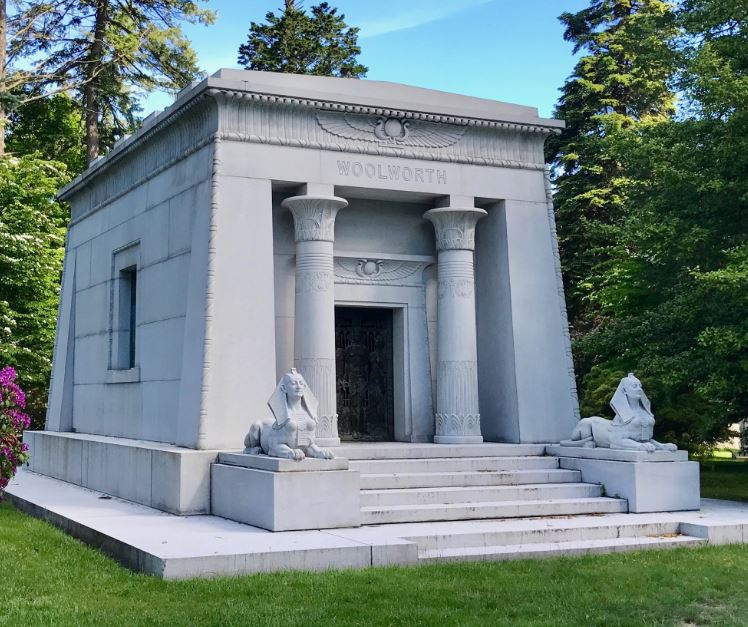
The Woolworth Mausoleum in the Bronx, New York features scarabs, sphinx, ankhs, sun discs, cobras, lotus, and other Egyptian symbols.
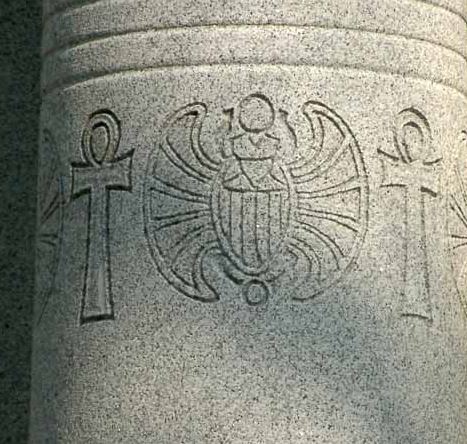
Scarab beetles alternate with ankhs in a pattern around these columns on the Egyptian-style Woolworth Mausoleum.
Star

Nut, the ancient Egyptian goddess of the sky, was said to have given birth to the sun-god every morning. He then passed over her body until he reached her lips at sunset. He then entered her mouth, traversed through her body, and was again reborn at dawn.

This gravestone has several symbols that have their roots in Egypt. First, to ancient Egyptians, the five-pointed star meant “rising upwards toward the point of origin” just as the sun god traveled over Nut.
At the center of this star is the “all-seeing eye.” The rays of light represent the sun god Re and the serpent evokes power and protection. The plant is symbolic of life.
That’s a lot of symbols for one gravestone! There is even a small cross beneath the star, indicating that the deceased was Christian. Despite the Egyptian influence, he was most likely a member of the Freemason fraternity.

Even though many of these symbols had their beginnings in Egypt, these same emblems were later used by Freemasonry, on the United States dollar bill, and on the back of the seal of the United States of America.
Sphinx

The Great Sphinx of Giza is both puzzlement and inspiration from ancient Egypt. It has the face of a woman and the body of a lion. Although its origins are unknown, the sphinx has influenced sculptures around the world.
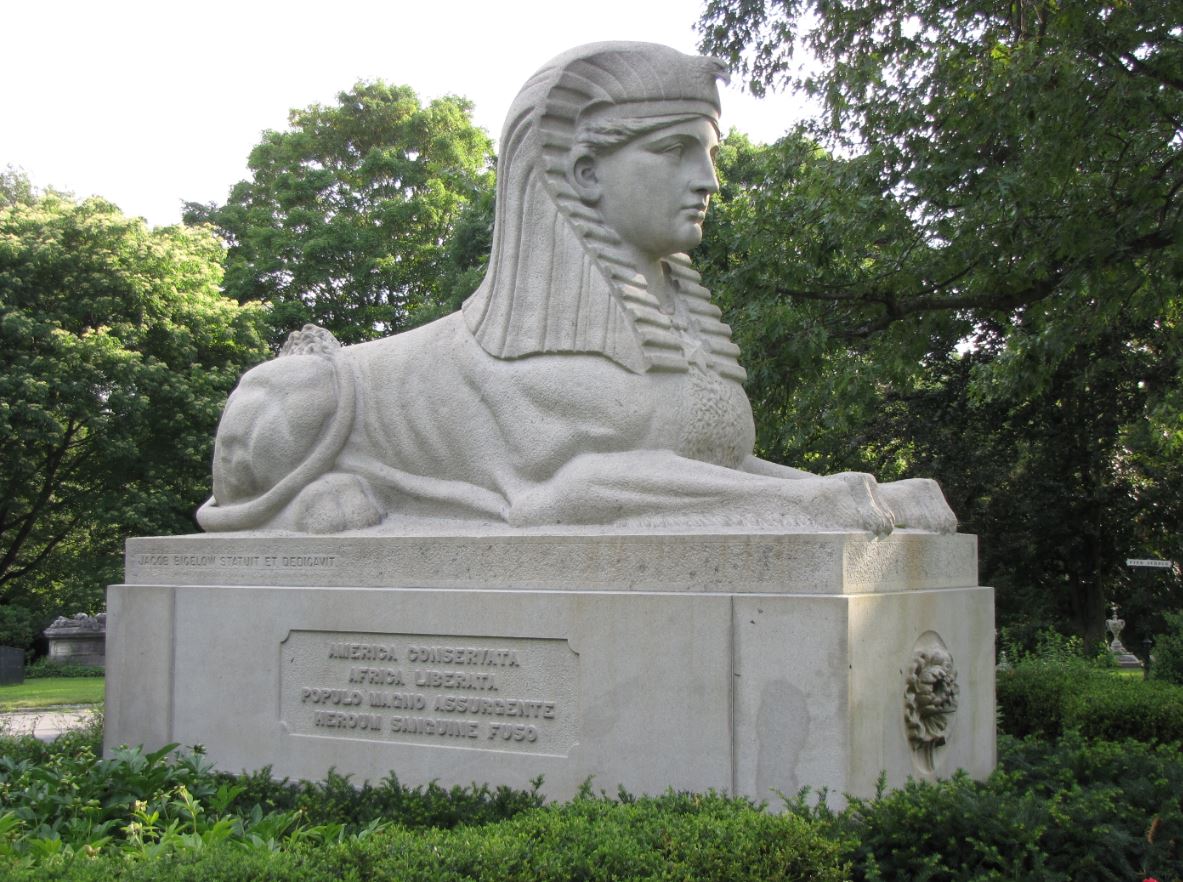
This sphinx guards the entrance at Mount Auburn Cemetery in Cambridge, Massachusetts.
The sphinx in the photo above is from Mount Auburn Cemetery at Cambridge, Massachusetts. It is an impressive 8 feet tall and 15 feet long! The sculpture was commissioned by Dr. Jacob Bigelow as a tribute to the end of the American Civil War.
The Mount Auburn Cemetery sphinx monument was controversial because it strayed from traditional Civil War monument designs. But Dr. Bigelow intended the symbol of the sphinx’s face to be one of looking forward with hope, liberty, and freedom. And he intended the body of the lion to represent the foundations of antiquity. Together, the symbols portrayed a break with the past and a rise to new beginnings.
Winged Sun Disc

The winged sun was a symbol of royal dignity in the ancient Egyptian kingdom, where they revered Ra, the ancestor of the pharaohs, god of the sun, and creator of the world. The sun was worshiped because it was the life force of all living things.

This winged sun disc is flanked by a pair of cobras. It is a common Egyptian symbol. This one is from a gravesite at Lakeview Cemetery, Cleveland, Ohio. Photo credit
Modern Egyptian Funeral
At modern Egyptian funerals, it is traditional for the men of the community to accompany the bodies of the deceased to the graveyard. Then the women visit the grave 3 days later to see the soul off into the afterlife.
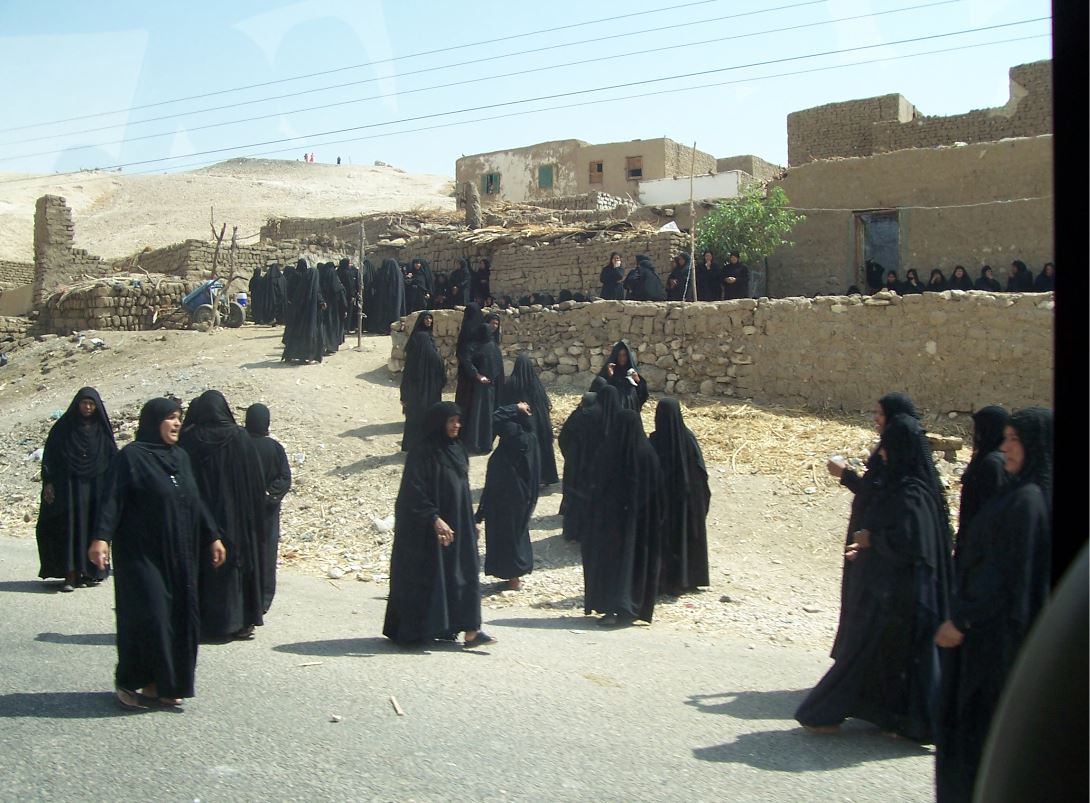
When I was traveling in Luxor, our tour bus passed this group of women excitedly chatting and calling out to one another.
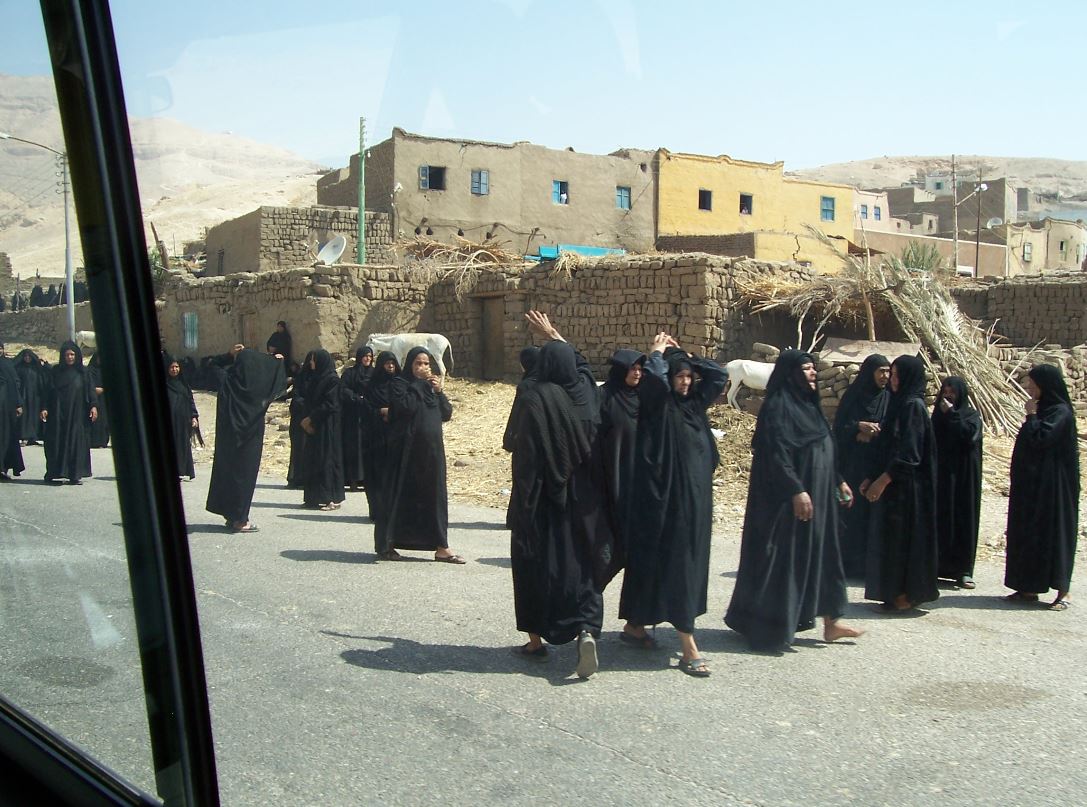
Our tour guide told us that funerals are usually happy gatherings for Egyptian women. This was due to the fact that most women usually only left their homes to shop at the marketplace. Graveside memorials were one of the few opportunities in a lifetime for women to gather as a group.
Now as you journey out to a cemetery, you are armed with new knowledge about Egyptian symbols to make your trip more meaningful! You also now know more about your ancestors and the times they lived in. And the more you know about your ancestors the better you understand yourself!
To learn about other gravestone symbols check out Understanding Cemetery Symbols, Part I and Understanding Cemetery Symbols, Part II.
Volunteer
If you would like to take gravestone photos, click HERE to get started. You are welcome to do this at your own convenience, no permission from us is needed. If you still have questions after you have clicked on the link to get started, email us at Volunteer@BillionGraves.com.
Happy Cemetery Hopping!
Cathy Wallace


